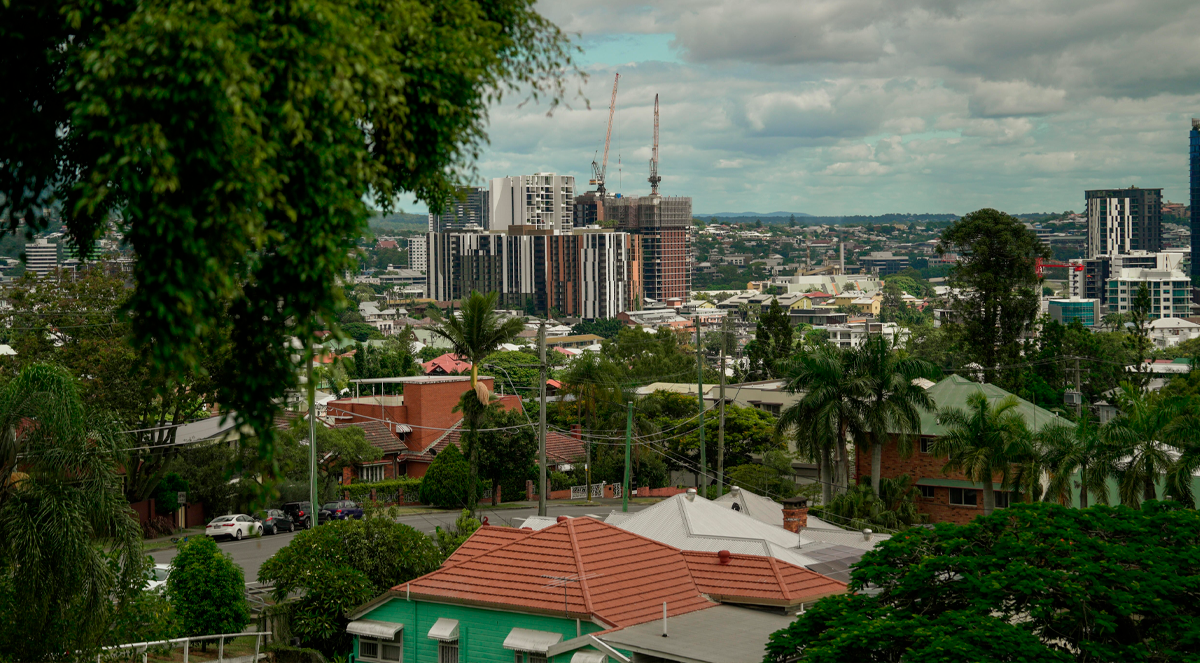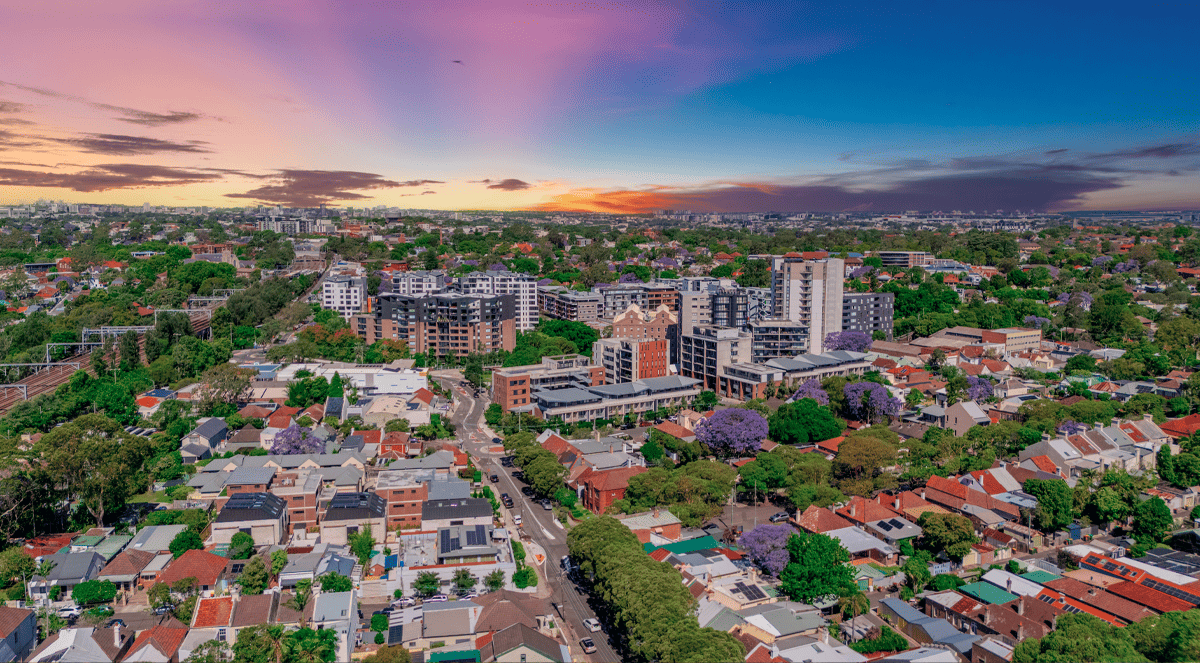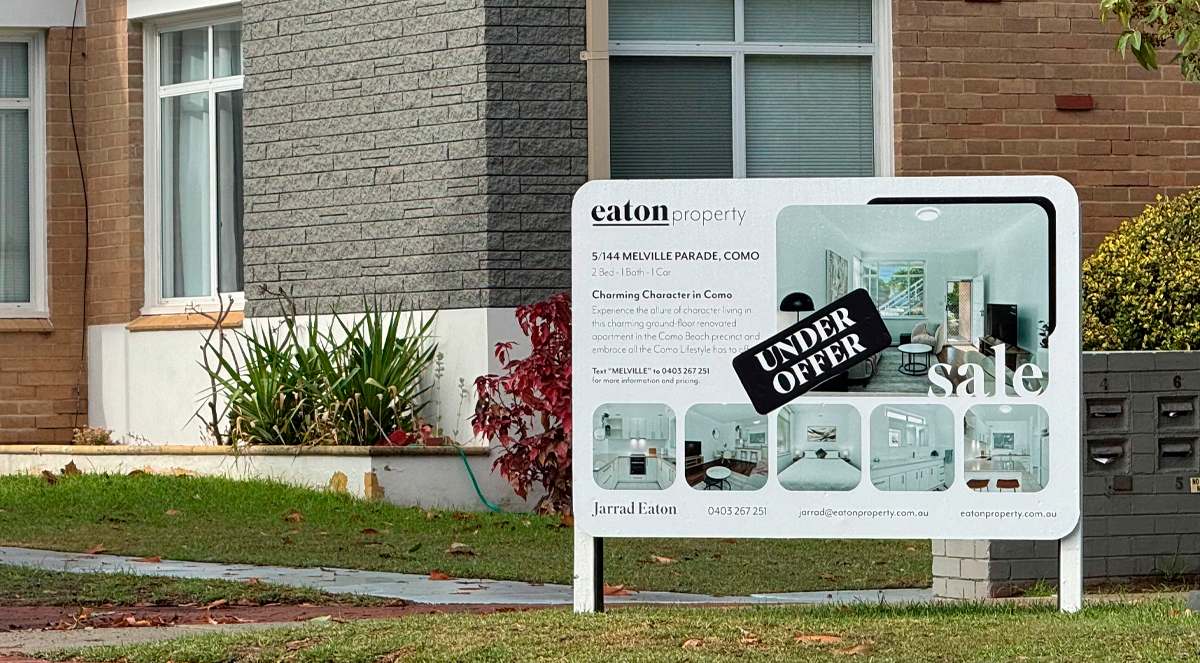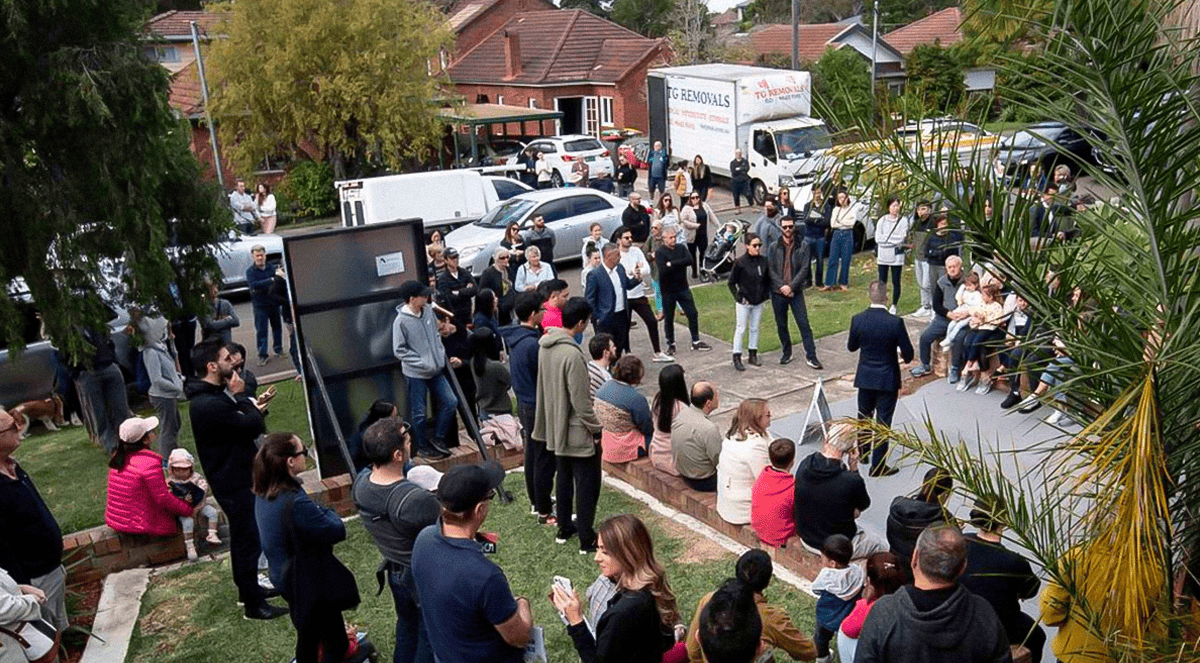-1.png)
KEY POINTS
- Outer suburb property values in Australia outperformed inner-city areas over the past year as buyers seek affordability amid rising mortgage and borrowing costs
- The cheapest 25% of properties saw the strongest growth, with suburbs more than 20 km from CBDs dominating top-performing areas across all major capital cities
- As median incomes can't afford median-priced homes, buyers are moving to city fringes, causing a shift in the market with major implications for infrastructure and planning
Australia’s outer suburban property markets have outpaced their inner-city counterparts over the past year.
New data from Cotality, the company formerly known as CoreLogic, confirms the nation’s strongest housing conditions are concentrated on the fringes of each capital city.
The details
Cotality says the lower quartile (or the cheapest 25% of all properties) has led capital growth over the past year.
The company says this reflects increased demand for more affordable homes as buyers “navigate continued serviceability constraints and stretched affordability metrics.”
Cotality’s Research Director, Tim Lawless, says that despite a cost-of-living crisis, strong capital growth has clustered on the outskirts of cities where he says home values remain “just” within reach for many Australians.
“Households are making pragmatic decisions in response to tighter borrowing capacity and higher mortgage costs,” Mr Lawless says.
“That’s pushed demand towards the lower quartile of the market, and it’s across the outer suburbs that this value-driven demand is translating into the strongest growth.”
The trend is visible in every capital city.
In Sydney, all of the top twenty suburbs for annual growth were at least 20 kilometres from the city’s central business district, with the Fairfield, Liverpool and Blacktown local government areas dominating the city’s top 20 list.
81% of suburbs 20 kilometres or more from central Sydney recorded annual gains, compared with only 26% of those within 5 kilometres of the CBD.
It’s a similar story in Melbourne, where despite what Cotality calls “broader market softness”, 38% of suburbs 20 kilometres or more from the city recorded growth, with the Hume, Frankston and Casey local government areas emerging as the Victorian capital’s best performers.
In contrast, just 4% of suburbs within 5 kilometres of the city saw a rise in dwelling values.
In the mid-sized capitals of Brisbane, Perth and Adelaide, it’s a more mixed picture, but overall greater home price growth is skewed towards outer suburbs.
In Brisbane, only 2% of suburbs have recorded price declines over the past 12 months.
While the city as a whole has experienced strong growth, property values in the lower quartile of the market are up 14.0% over the past 12 months compared with a 4.8% rise in the upper quartile or most expensive property markets.
Across the top 20 suburbs recording the highest annual gain in values, 17 were located at least 20 kilometres from the Brisbane GPO (General Post Office), with more than half of the top 20 located within the fast-growing Ipswich local government area.
Cotality says Adelaide has seen dwelling values rise by an impressive 9.8% over the past year, with every suburb recording a rise.
However, the strongest gains have been concentrated across the lower quartile of the market, with values up 15.2% compared with a 7.3% gain in values in the most expensive markets.
16 of the top 20 suburbs for annual gains in value were located at least 20 kilometres from the Adelaide CBD, with the booming northern suburbs leading the way.
7 of the top 20 growth suburbs were located within the Playford local government area, and 5 in the neighbouring Gawler LGA.
The difference between the upper and lower quartiles is particularly apparent in Perth.
There, the most affordable homes have recorded double the level of growth of the upper quartile over the past year, up 15.4% and 7.7% respectively.
15 of the top 20 highest growth suburbs were located at least 15 kilometres from the Perth CBD, and only one suburb in the top 20 was within 10km of the city centre.
The Swan and Mundaring local government areas accounted for the largest share of high-growth suburbs.
Outer suburbs offer affordability
Mr Lawless says Cotality’s data underscores what he calls a structural shift in buyer behaviour, “driven by the fact that the median income no longer buys the median home.”
“In theory, a household on a median income, with a 20% deposit, would need to dedicate just over half of their gross income to afford a median-priced home,” he says.
“In practice, that’s pushing buyers further out, where homes remain comparatively affordable.
“The result is that we’re seeing outer suburban markets do much of the heavy lifting in terms of price growth.”
Mr Lawless says this geographic tilt towards the fringes of our major cities has implications for infrastructure, transport and planning, as populations in these areas grow rapidly off the back of housing demand.
Stay Up to Date
with the Latest Australian Property News, Insights & Education.




.png?width=292&height=292&name=Copy%20Link%20(1).png)
 SIGN UP FOR FREE NEWSLETTER
SIGN UP FOR FREE NEWSLETTER





.jpg?width=1920&height=1080&name=Warning%2c%20You%20Might%20Be%20Facing%20Higher%20Taxes%20Soon%20(1).jpg)





.png?width=1920&height=1080&name=Rate%20Drops%20Signal%20BIGGEST%20Property%20Boom%20in%20DECADES%20(1).png)

.jpg?width=1920&height=1080&name=Labor%20vs%20Liberal%20These%20Housing%20Policies%20Could%20Change%20the%20Property%20Market%20Forever%20(1).jpg)
.jpg?width=1920&height=1080&name=QLD%20Slashes%20Stamp%20Duty%20Big%20News%20for%20Investors%20%26%20Home%20Buyers%20(1).jpg)
.jpg?width=1920&height=1080&name=Trump%20Just%20Slapped%20Tariffs%20%E2%80%93%20Here%E2%80%99s%20What%20It%20Means%20for%20Australia%20(1).jpg)
.jpg?width=1920&height=1080&name=Federal%20Budget%202025%20More%20Debt%2c%20No%20Housing%20%E2%80%93%20Here%E2%80%99s%20What%20You%20Need%20to%20Know%20(1).jpg)
.jpg?width=1920&height=1080&name=Australias%20Housing%20Crisis%20is%20about%20to%20get%20MUCH%20Worse%20(New%20Data%20Warns).jpg)
%20(1).jpg?width=1920&height=1080&name=Australias%20RENTAL%20CRISIS%20Hits%20ROCK%20BOTTOM!%20(2025%20Update)%20(1).jpg)
%20(1).png?width=1920&height=1080&name=Is%20Adelaide%20Still%20a%20Good%20Property%20Investment%20(2025%20UPDATE)%20(1).png)
.jpg?width=1920&height=1080&name=RBA%20Shocks%20with%20Rate%20Cuts!%20What%E2%80%99s%20Next%20for%20Property%20Investors%20(1).jpg)
%20(1).jpg?width=1920&height=1080&name=I%20Predict%20The%20Feb%20Rate%20Cut%20(My%20Price%20Growth%20Prediction)%20(1).jpg)
.png?width=1920&height=1080&name=Why%20Property%20Prices%20Will%20Rise%20in%202025%20Market%20Predictions%20(1).png)
.jpg?width=1920&height=1080&name=Why%20Investors%20Are%20Choosing%20Apartments%20Over%20Houses%202%20(1).jpg)
.jpg?width=1920&height=1080&name=Why%20Rate%20Cuts%20Will%20Trigger%20A%20Property%20Boom%20(1).jpg)
.jpg?width=1920&height=1080&name=Retire%20On%202Million%20With%20One%20Property%20(Using%20SMSF).jpg)
.jpg?width=1920&height=1080&name=4%20Reasons%20Why%20You%20Should%20Invest%20in%20Melbourne%20Now%20(1).jpg)
%20(1).jpg?width=1920&height=1080&name=Old%20Property%20vs%20New%20Property%20(Facts%20and%20Figures%20Revealed)%20(1).jpg)
%20(1).jpg?width=1920&height=1080&name=Will%20The%20New%20QLD%20Govt%20Create%20a%20Property%20Boom%20or%20Bust%20(My%20Prediction)%20(1).jpg)
%20Scott%20Kuru%20(1).jpg?width=1920&height=1080&name=Inflation%20Hits%20Three-Year%20Low%20(Will%20RBA%20Cut%20Rates%20Soon)%20Scott%20Kuru%20(1).jpg)
.jpg?width=1920&height=1080&name=How%20to%20Buy%20Investment%20Property%20Through%20SMSF_%20The%20Ultimate%20Guide%20(1).jpg)
.jpg?width=1920&height=1080&name=Victoria%20Slashes%20Stamp%20Duty%20Melbourne%20Set%20to%20Boom%20Scott%20Kuru%20(1).jpg)
.png?width=1571&height=861&name=Are%20Foreign%20Buyers%20Really%20Driving%20Up%20Australian%20Property%20Prices%20(1).png)
.jpg?width=1920&height=1080&name=The%20Single%20Factor%20That%20Predicts%20Property%20Growth%20Regions%20(1).jpg)
%20Scott%20Kuru%20(1).jpg?width=1920&height=1080&name=My%20Prediction%20On%20Rates%20%26%20Negative%20Gearing%20(Market%20Crash)%20Scott%20Kuru%20(1).jpg)

-1.png?width=1920&height=1080&name=Major%20Banks%20Cut%20Rates%20Will%20RBA%20Follow%20Suit%20(Sept%20Rate%20Update)-1.png)
%20Scott%20Kuru-1.png?width=1920&height=1080&name=Rate%20Cut%20Coming%20What%20New%20Zealands%20Move%20Means%20for%20Australia%20(Sept%20Prediction)%20Scott%20Kuru-1.png)
%20(1).jpg?width=1920&height=1080&name=Buy%20when%20the%20interest%20rates%20are%20high!%20(Why%20you%20must%20buy%20now!)%20(1).jpg)
.jpg?width=1920&height=1080&name=Carms_Revised%20Taxes%20Due%20Aug%209%20YT%20Thumbnail02%20(1).jpg)
.jpg?width=1920&height=1080&name=Carms_Too%20Little%20Too%20Late%20Aug%207%20YT%20Thumbnail01%20(1).jpg)









.jpg?width=1920&height=1080&name=Carms_Rate%20Drop%20In%20July%20Jun%2010%20YT%20Thumbnail02%20(1).jpg)
.jpg?width=1920&height=1080&name=Carms_Own%20a%20Property%20V6%20Jun%205_YT%20Thumbnail%20(1).jpg)









.png?width=1920&height=1080&name=Artboard%201%20(3).png)






.jpg?width=1920&height=1080&name=YT%20thumbnail%20%20(1).jpg)

